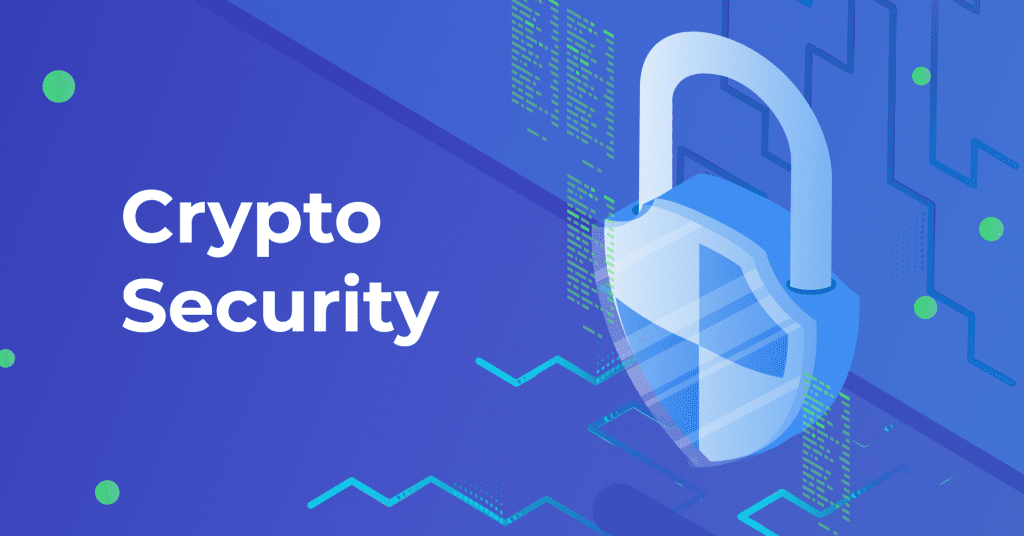The decentralized model of cryptocurrency essentially transfers power to the users, which is why many users are attracted to it. However, that power comes with the responsibility of maintaining the privacy of your security keys. You have full effective ownership of your fund, and you are solely responsible for the safety of your fund. This article will look at the best ways to cater to users.

As a digital asset, cryptocurrency has intrinsic value and can be stolen and diverted to new owners instantly and irrevocably. This creates a big incentive for hackers to target users who don’t take their security seriously.
In 2020, research data revealed that global crypto losses due to hacks exceeded $3.8 billion. Most of these losses are borne by trading platforms, wallet service providers, and related businesses. Due to the undeniably high risk of breaches and security threats, cryptocurrency exchange platforms and wallet service providers are investing more in cybersecurity.
The systems they purchase, like those used in traditional centralized financial institutions, come with complex security features and multiple layers of security. As organizational security levels become increasingly difficult to penetrate, individual users are becoming increasingly targeted by hackers.

So to protect your personal account, here are 10 methods that can be considered the most effective today:
1. Change your perception of cybersecurity
It’s a well-established fact that we are paying a security fee for our funds in a bank account (although the “security fee” will never appear on a bank statement).
Unlike traditional centralized banking and financial institutions, decentralized systems like cryptocurrencies transfer control and responsibility for security to individual users.
With cryptocurrencies, as soon as we have the pleasure of completing our first crypto transaction, it should be remembered that there is no security service from a provider similar to what a bank offers. There may not even be enough regulation to provide any protection (depending on the governing regulations of the country or region where the owner resides).
Therefore, crypto users should take necessary security measures such as purchasing simple and easy-to-use hardware devices, mastering protocols, and implementing the best suggested in this article.
2. Choose a trusted trading platform with a compensation or security incident insurance mechanism
The most obvious risk that cryptocurrency holders face is having their coins stolen. Assuming most individual users hold coins on cryptocurrency trading platforms, choosing a reliable platform is crucial.
Currently, there are no benchmarks for international security standards or independent authority ratings for trading platforms in the cryptocurrency industry. Therefore, it is necessary to properly understand the security mechanism of a platform before signing up, such as a company’s current security investment.
In addition, it is essential to check if there are some types of user account insurance or some form of guaranteed compensation for security breaches. You can check out CoinCu’s article on FDIC insurance here.
3. It’s not enough to know enough about anti-phishing and anti-phishing activities, you need to complete a safety test
As a cryptocurrency holder, you should be familiar with the primary risks of users. Among them, phishing attacks are the most common. You should be equipped with knowledge of common “bait” techniques to avoid being considered a “fish” in the eyes of the fisherman.
For example, you receive a phishing attack email and a URL inviting you to click on a fake domain name similar to a trusted domain name, e.g., www.goog1e.com (note that it is not www.google.com). It could even be a copy of a commonly used trading platform.
According to the available data, about 75% of organizations worldwide experienced some kind of phishing attack in 2020. If your email has been compromised or previously had a compromised account, the phishing attack email will be carefully designed to target you. According to statistics, 96% of phishing attacks come from email.
How do you prevent this?
A reliable method for crypto holders is to complete a tamper-proof security test. Google’s online test is a good benchmark, and you can take it here. It consists of 8 questions and only requires 10 minutes of your time.
What if you don’t get a perfect score? It means you need to raise your security awareness and retry the test. Many large companies also use the test to check their employees’ perceptions and the company’s status.
Other common scams are sending fake gifts or bonuses through official social media channels, posing as a customer support agent, or copying an exchange CEO’s social account.
Above are the first three methods to protect your personal crypto assets. To continue learning about this topic, you can read the following article here.
DISCLAIMER: The Information on this website is provided as general market commentary and does not constitute investment advice. We encourage you to do your own research before investing.
Join CoinCu Telegram to keep track of news: https://t.me/coincunews
Follow CoinCu Youtube Channel | Follow CoinCu Facebook page
Harold
CoinCu News





